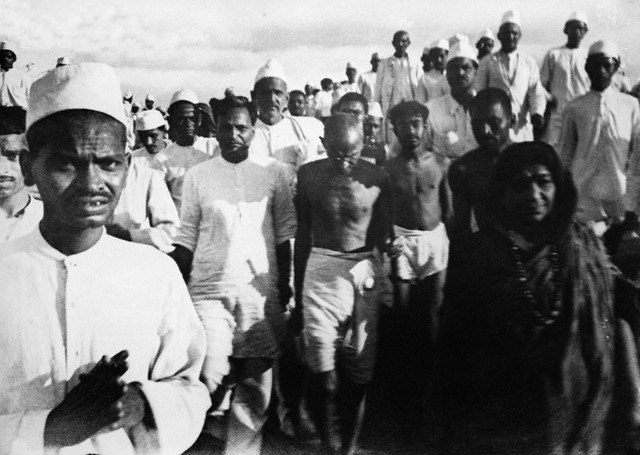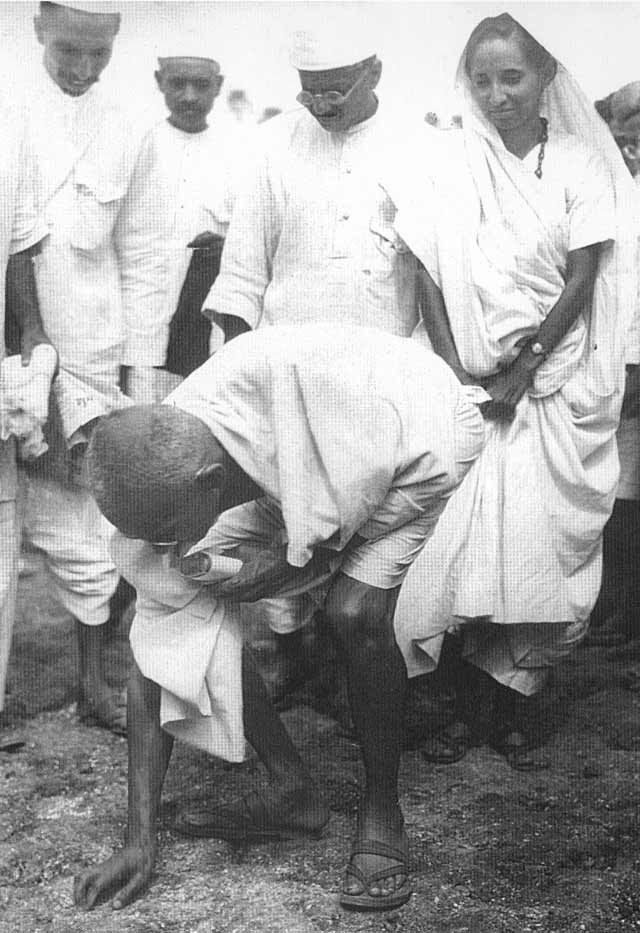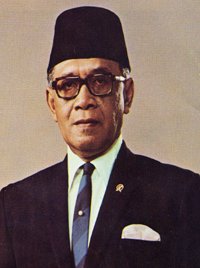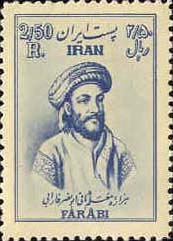

India 500 Rupees 1997 UNC
Front: Mohandas Karamchand Gandhi
Back: Salt March to Dandi
The Salt Satyagraha was a campaign of nonviolent protest against the British salt tax in colonial India which began with the Salt March to Dandi on March 12, 1930. It was the first act of organized opposition to British rule after Purna Swaraj, the declaration of independence by the Indian National Congress. Mahatma Gandhi led the Dandi march from his Sabarmati Ashram to Dandi, Gujarat to produce salt without paying the tax, with growing numbers of Indians joining him along the way. When Gandhi broke the salt laws in Dandi at the conclusion of the march on April 6, 1930, it sparked large scale acts of civil disobedience against the British Raj salt laws by millions of Indians. Read more
 Gandhi on the Salt March
Gandhi on the Salt March Gandhi on the Salt March, Sarojini Naidu on the right.
Gandhi on the Salt March, Sarojini Naidu on the right. Gandhi at Dandi, April 5, 1930, picking up a lump of salty mud.
Gandhi at Dandi, April 5, 1930, picking up a lump of salty mud.Indormation and Image Obtained From Wikipedia, the free encyclopedia







































